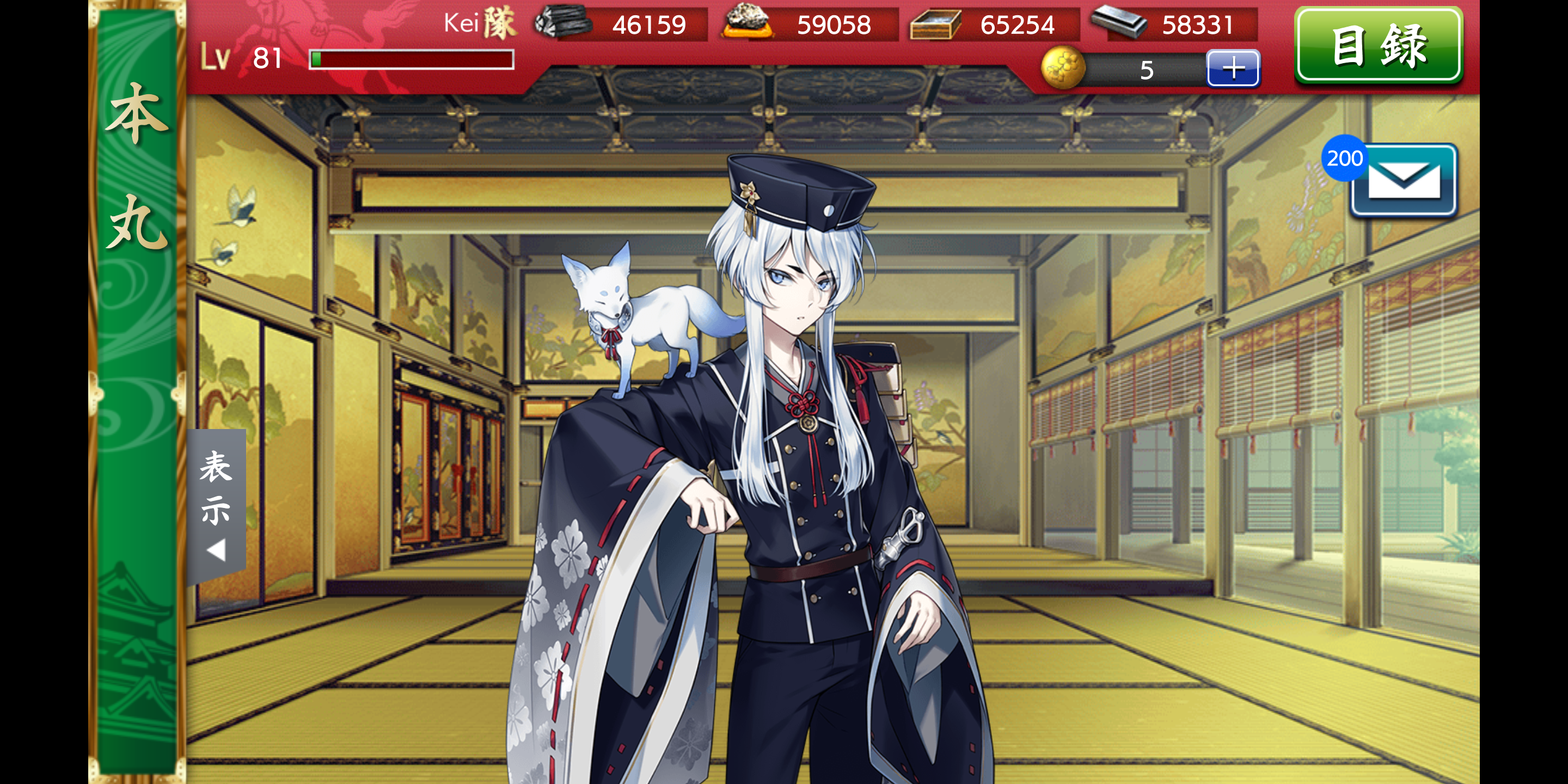How many kinds of Japanese swords can you name ? Honestly ? Six ? Seven ? Eight ? Twelve ? Are Naginata swords ? Are Yari ? Well. We can start counting by length and see where it gets us. Or, we can turn our gazes to the oldest known type of Japanese sword – the Tsurugi.
As of today’s date, it is actually possible for a Saniwa to acquire a Tsurugi. The sword type is fully implemented in the game and if one has had luck, lots and lots of luck, they might already be the proud sages who can send an actual Tsurugi to the frontlines. Or to an event. Oh, and if a Saniwa wants to add such a rare warrior to their collection, with the current situation they would need to wait for an event or campaign, and pile resources for it. Because so far there had been two campaigns for a Tsurugi and both have been of the smithing variety. Pretty painful, if one could be honest.

Currently, there is only one Tsurugi in the game – Hakusan Yoshimitsu, and both smithing campaigns in the game when it comes to Tsurugi have been about acquiring him. He’s a pretty one.

What’s really interesting about him, and Tsurugi in general when it comes to one’s Unit, is that they are the first and, so far only, swords that have Godly Feats ( 神技 ) which means a special power that no other sword posses. Currently, the only Tsurugi in the game can actually heal (治癒の力). But there are, of course, limitations.
Hakusan Yoshimitsu cannot heal himself. He would help his Unit but his powers would not work on his own health points. What matters, though, is his energy. He would not be able to heal if he is tired and his Fatigue levels is below 20. A single healing costs 20 Fatigue so it can be quite exhausting, especially if your sword is newly arrived and still a baby.
Be kind to your Tsurugi. Take him to 1-1, bring him to Sakura. Don’t work him to the bone. Don’t ruin him for the sake of other swords. They are fine and delicate pieces of art, handle them with care.
Another limitation for them is that he can only heal one sword at a time, and only swords who are gravely injured. Pair that with the Fatigue issue, and using one as a crutch could end really badly for more than one warrior.
Stats-wise, they are not exactly weak and when levelled up, they are a force to be reckoned with, but they are not tanks and they are not glass cannons. Again, be gentle with them. They come with the highest Survival (生存) but tend to be low on mobility (機動), which makes them slow and forces them to attack last. They are also affected by night battles, so be careful.
No matter how much you want it, please, do not take your precious and rare Tsurugi to Ikedaya. Also, to other night battles, but Ikedaya has too many of those. There are other ways to collect Kiwame resources.

A Tsurugi has three troop slots which is one their selling points because, let’s be real, troops offer security and extra firepower one cannot get anywhere else. But fully equipped and protected ? They are a force of nature.
An actual Tsurugi is a straight, double edged sword. It is heavily influenced by the Chinese sword jian and it is old. This kind of swords were made before even Tachi and are left in history as the style before what we all think of when we hear “Japanese sword”.
Up there you can see Hakusan Yoshimitsu as an example of a Tsurugi on the left and a Bronze jian of the Warring States Period on the right. A little bit of random trivia is that while Hakusan Yoshimitsu is a Tsurugi, he is from the Awataguchi School and is supposed to have belonged to the adopted daughter of Tokugawa Iemitsu. Supposedly made around the end of the 13th century, he is still quite new and young for a Tsurugi.
If you decide to do some research of your own, though, you might face a wall named Kusanagi no Tsurugi. The Grass Cutter. Now. The Kusanagi is a real sword that actually existed and its current whereabouts are under question. Kusanagi no Tsurugi is one of the Three Imperial Regalia of Japan, along with Kusanagi no Tsurugi is one of the Three Imperial Regalia of Japan, along with Yata no Kagami (a mirror) and Yasakani no Magatama (a jewel). The thing about the sword is that while there is official information about where it is kept and its case has been seen rather recently, the blade itself has not been seen for a while. Long time a while. There are rumours if it even exists anymore or, if it does, if it is where it’s supposed to be.
That is not the point I, as a Newbie, am trying to make here, though. Lots of sources seem to equate a Tsurugi as a kind of sword with Kusanagi no Tsurugi, the Emperor’s divine sword. So make sure you’re reading credible sources if you dig around.
The Kusanagi no Tsurugi is a Tsurugi, but not every Tsurugi is the Kusanagi no Tsurugi. Thank you.
Thank you for reading. I would like to give my special thanks to the amazing SkyfirePrism who is not only my beta but also my source of information and fact checking. And, for this specific post, my photographer. Because she was blessed with Hakusan Yoshimitsu, while I wasn’t, so she kindly took all those screenshots.
Thank you.

